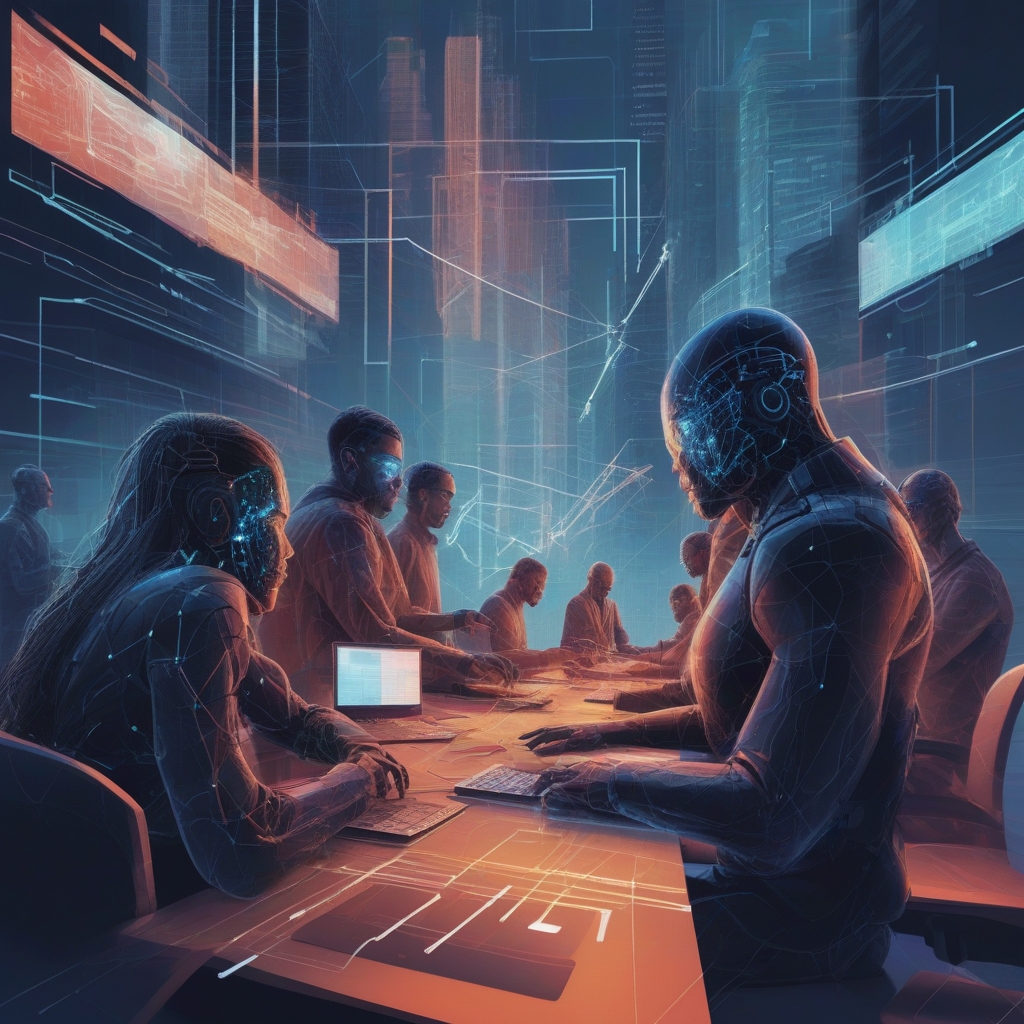Introduction: The Rise of AI in Cyber Defense
In an era defined by rapid technological advancement, the threat of cybercrime has grown exponentially. As digital landscapes evolve, so do the methods malicious actors use to exploit vulnerabilities. However, a new front in the battle against cybercrime has emerged, led by the innovative capabilities of artificial intelligence. OpenAI, a pioneering force in AI, has unveiled its proactive measures to thwart cybercrime on a global scale, marking a significant leap forward in digital defense.
The Role of OpenAI in Cyber Security
OpenAI’s contribution to cybersecurity stems from its sophisticated AI systems, capable of detecting and mitigating an array of digital threats. By leveraging its advanced algorithms, OpenAI can:
- Predict potential security breaches before they occur
- Analyze vast amounts of data with unparalleled speed and accuracy
- Identify patterns and anomalies indicative of cyber threats
These capabilities not only enhance the security frameworks of organizations worldwide but also provide a robust deterrent against cybercriminal activities.
AI-Powered Threat Detection
One of the most formidable features of OpenAI’s defense mechanism is its ability to recognize complex patterns in digital behavior that signify malicious intent. Through machine learning, OpenAI systems can self-improve by studying cyber-attacks, adapting to new strategies, and preemptively identifying vulnerabilities. This intelligence allows for almost real-time responses to potential threats, significantly reducing the window of opportunity for cybercriminals.
Collaboration with Global Tech Experts
OpenAI has established partnerships with tech experts globally, fostering a collaborative ecosystem to amplify its cybersecurity efforts. This network achieves several objectives:
- Sharing of Best Practices: Regular collaboration ensures that the latest insights and methodologies are shared across borders.
- Resource Pooling: Joint resources and expertise allow for the deployment of comprehensive defense strategies.
- Continuous Training: The AI models benefit from diverse data inputs, enhancing their learning and adaptation processes.
By aligning their efforts with international tech organizations, OpenAI aims to establish a unified defense front against cyber threats.
Impact on Global Cybercrime Campaigns
The introduction of OpenAI’s advanced AI systems has started to significantly disrupt ongoing global cybercrime campaigns. The adaptability and predictive capabilities of AI have made it increasingly difficult for cybercriminals to execute attacks successfully.
Case Studies: Success Stories
Several instances have demonstrated the effectiveness of AI in dismantling cyber threats:
- Financial Sector: Banks and financial institutions reported a marked reduction in phishing attempts and unauthorized access incidents, thanks to AI-driven monitoring systems.
- Healthcare Industry: Hospitals and clinics have seen improvements in the protection of sensitive patient data against ransomware attacks.
- Government Security: National infrastructures benefited from heightened resilience against espionage and infrastructure sabotage.
These success stories underscore the transformative impact of OpenAI’s initiatives in safeguarding critical sectors around the world.
Challenges and Future Directions
While the proactive measures by OpenAI represent a breakthrough in cyber defense, several challenges persist. Cybercriminals are continually evolving their strategies, leading to an ongoing arms race between attackers and defenders.
The Adaptive Nature of Cyber Threats
Cybercriminals have increasingly adopted advanced technologies themselves, leveraging AI and machine learning to develop sophisticated attacks. This dynamic threat landscape requires continuous adaptation and innovation within cybersecurity frameworks.
- Evolving Tactics: Malicious actors frequently change their tactics to bypass detection systems.
- Resource Depletion: Security teams must balance between maintaining robust defenses and resource allocation.
OpenAI’s Forward-Looking Strategy
To stay ahead of these challenges, OpenAI has outlined a forward-looking approach:
- Enhanced AI Models: Continuous improvements to AI models will be initiated to build resilience against evolving threats.
- Global Collaboration: Expanding the network of tech partners to ensure comprehensive surveillance and rapid response capabilities.
- AI Ethics and Governance: Implementing frameworks to ensure ethical use of AI in cybersecurity, fostering public trust and accountability.
Conclusion: Securing the Digital Future with AI
OpenAI’s commitment to stymying global cybercrime campaigns highlights the pivotal role AI plays in securing our digital future. By harnessing the capabilities of AI, OpenAI not only enhances current cybersecurity measures but also lays the groundwork for a safer digital landscape. As the alliance between AI and cybersecurity strengthens, we can anticipate a significant reduction in global cybercrime, fostering a more secure and resilient technological ecosystem for everyone. Through continued innovation and collaboration, OpenAI will remain at the forefront of safeguarding the digital realm against malicious threats.

Leave a Reply